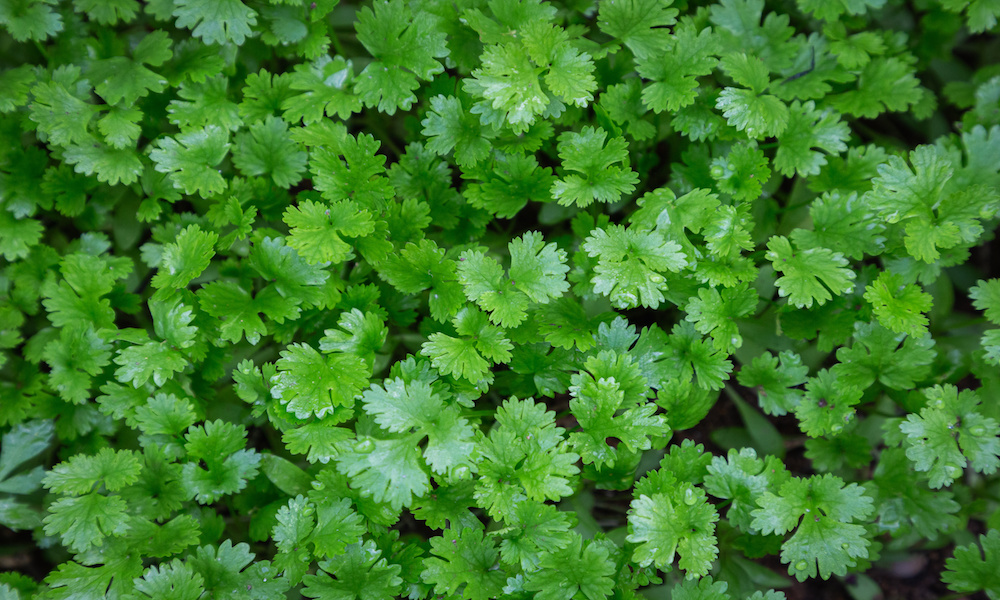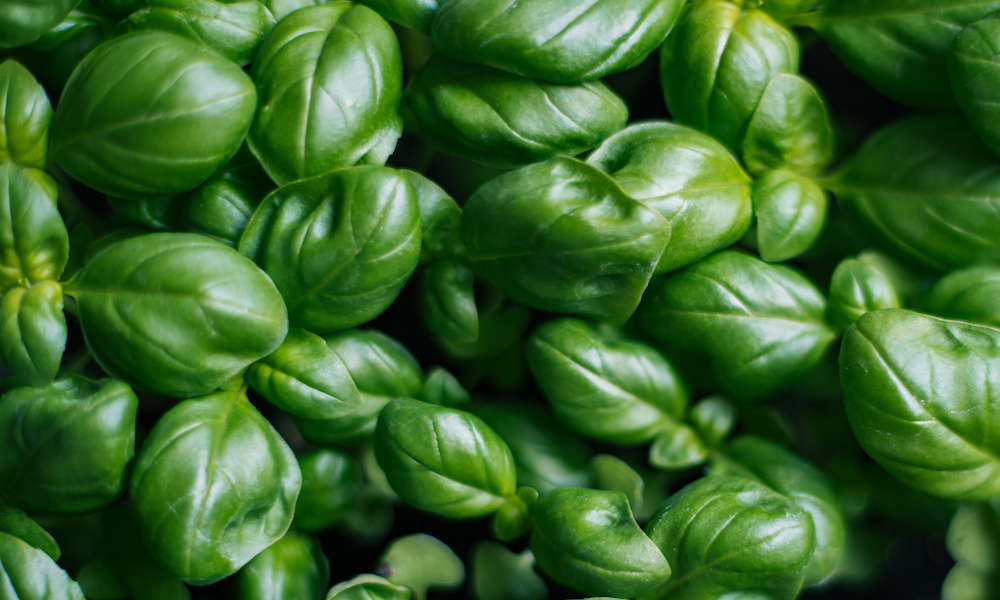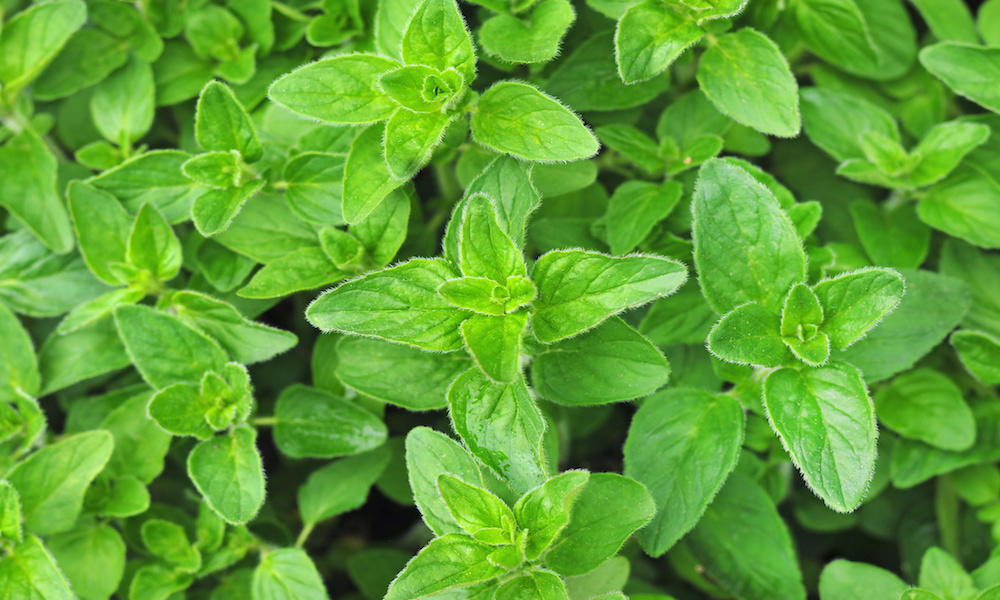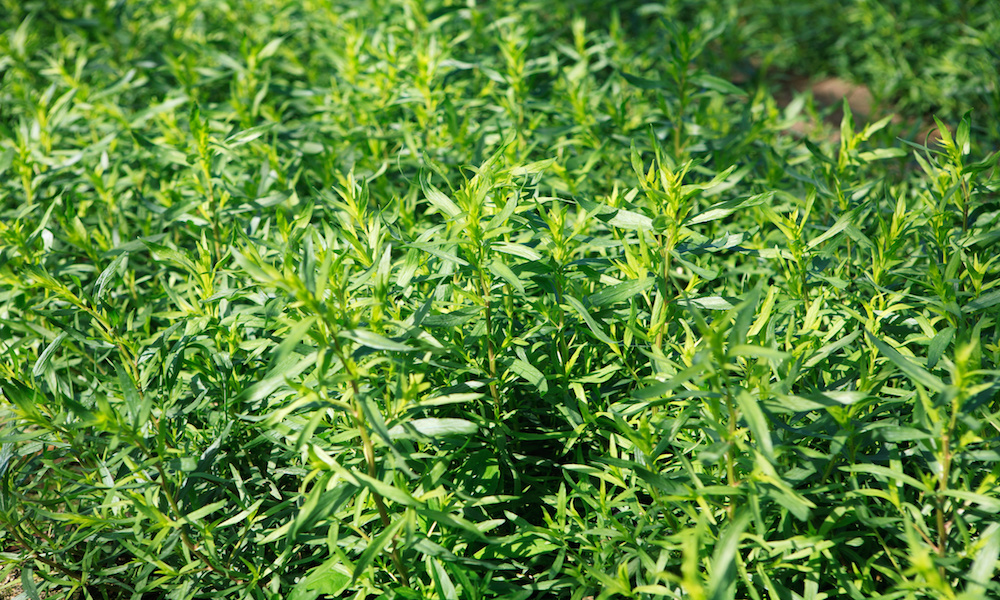Rosemary or Thyme? Here’s How To Spot (And Use) Every Herb in the Garden

All the extra time this new lockdown and working-from-home life has gifted us is resulting in a relative boom in cooking and gardening. Both simple pleasures, both meeting in the middle when it comes to the glorious herb garden.
You see, no proud home cook would be without one, and likewise with their gardening counterparts. If you’ve just grown one (or you’ve had one even before lockdown was a thing) then perhaps you just want to make sure that your greenery is reaching the right dish at the end of all that toil. Maybe (if you’re anything like us) you’ve been mixing up your herbs the wrong way.
Well, to help you differentiate between all those unique flavours, we asked chef of 20 years and founder of healthy food blog, The Urban Canteen, Paul Coonan, to guide us through all the wonderful smells and tastes of the herb garden.
What Can Herbs Bring To Your Cooking?
Fresh herbs can completely transform the most simplest of dishes. We don’t always have lots of time for cooking, especially after a long day at work or after exercise. Using fresh herbs then is a great way to inject flavour into a dish without having to use other flavour enhancing methods, such as sauces or stocks, which can be high in sugar or salt.
Using fresh herbs in recipes is also a great way to boost nutrient intake, especially with their amazing source of plant compounds which include anti-inflammatory and antioxidant properties.
How Do You Store Fresh Herbs?
The best way to store fresh herbs is either with a damp kitchen towel or a new clean j-cloth. Make it a little damp and ring out the excess water. Then roll your herbs in the cloth and store in the fridge.
The 10 Main Herbs To Know
Coriander
Coriander (or cilantro depending on where you’re from) is a super-fresh tasting herb that works so well in hot and spicy dishes such as curries and chilli. It’s quite a unique flavour that people usually love or hate, but if you want a cooling, fresh taste brought to a spicy meal, this is your guy.

Mint
Mint is an extremely versatile herb that is as equally at home in a sweet dish as it a savoury one, as well as cold or hot drinks. Strong tasting, fresh mint works well in salads, summery soups like pea or asparagus, homemade pesto and sprinkled on crushed new potatoes or with pasta. Alternatively, use it in hot water for a herbal tea, or throw it in some cold water with citrus fruits and cucumber for a lovely refreshing drink.

Parsley
A popular herb in European and Middle Eastern cooking, parsley is a mild herb that brings a lovely subtle, fresh taste to all dishes. Add to salads, especially mixed beans, lentils with a little grated lemon zest and you’re on to a winner.

Dill
Dill is quite a unique flavour; not overpowering while still bringing something punchy to the table. The mild aniseed taste is commonly used with fish and seafood, but can be used in many other ways. A great accompaniment with parsley in salads as well as with citrus fruits, if you like to keep your vegetables raw & crunchy, add some dill to a pickling liquor and it will add some real depth to the flavour.

Basil
Commonly used in salads and paired with tomatoes, basil is a favourite with many. The herb also goes well in many salads, sandwiches, pasta dishes, soups. Because basil has a strong bold flavour, blending it with some olive oil and using it as a dressing is a great way to use it sparingly but to great effect. For a cheeky curveball, try using them in a dessert, like macerated strawberries.

Oregano
Another versatile herb that can help enhance all of your sauces. Commonly used in flavourful Italian cuisine, oregano brings a lovely earthy flavour to your dishes. Like parsley, because it’s not too overpowering, it can be used in salad dressings and marinades, as well as salads and stews. Pro tip: pair it with chillies and make a chimichurri dressing you’ll want to drizzle over everything.

Chives
Chives have a very similar flavour to spring onions. A very mild taste, they work extremely well as a garnish on a wide variety of dishes but are perhaps best used sprinkled over the finished meal to add a final flavourful flourish. Also, add into salads for a lovely mild taste when you might not want the harshness of raw onion.

Thyme
Another woody herb similar to oregano, that packs a lovely flavour. A great herb to use to flavour sauces and wet dishes; simply drop it in as is, stalk and all, then take out at the end so you are left with nothing but flavour. Use in marinades, rubs, dressings, and sauces to enhance the taste. Strip the small leaves off the stalk and use it in salads with a squeeze of fresh lemon.

Tarragon
Tarragon is quite a bold flavour. Very much like aniseed, the same compound is found in fennel, which is why they both have a similar flavour. Sprinkle over roasted root vegetables or even some grilled asparagus for added flavour.

Rosemary
Another woody herb like thyme, that can be used in sauces and stocks to bring a lovely fragrant depth. Strip the leaves off the stalks and add to most dishes such as salads, grains, or soups. You could even think about blending it with some salt to make your very own rosemary salt, an amazing seasoning that works on just about anything.



















